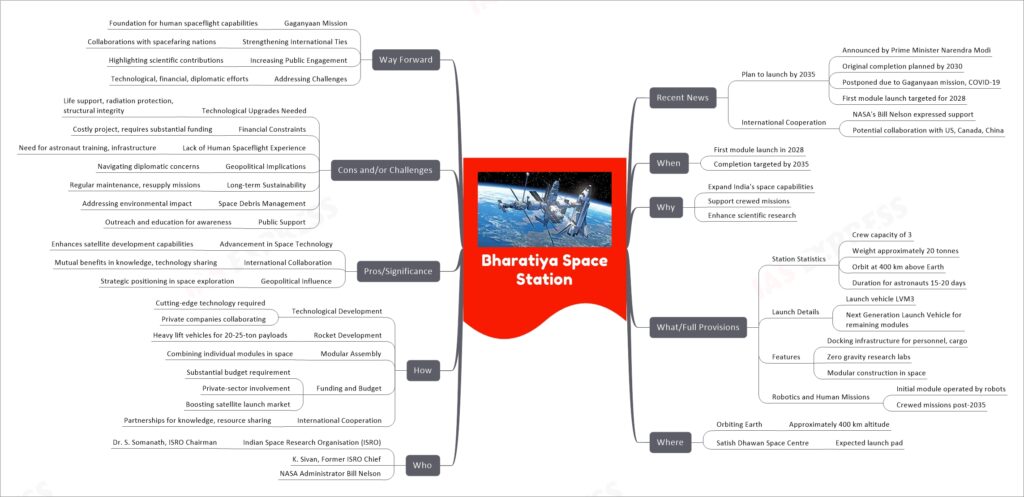Bharatiya Space Station

In summary, the Bharatiya Space Station is India’s initiative to establish a permanent space station, aiming for completion by 2035 with the first module launch planned for 2028. This ambitious project by ISRO is set to enhance India’s capabilities in space technology, scientific research, and international space collaboration. The station is envisaged to have a crew capacity of three and be equipped with advanced features like docking infrastructure and zero-gravity research laboratories. However, the project faces challenges such as the need for cutting-edge technology, substantial funding, human spaceflight expertise, and managing geopolitical implications. The success of this endeavor hinges on international cooperation, technological advancement, and public support.
If you like this post, please share your feedback in the comments section below so that we will upload more posts like this.

